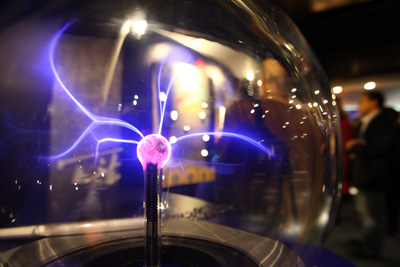
Don’t let the high falutin’ physicists kid you. The real job of the Large Hadron Collider is to make a large number of people (including me) feel especially stupid.
Mission accomplished. Good job, professor.
The LHC is supposed to reveal the secrets of the universe, but when it finds them, how are we going to know? The people who are in charge of this thing are smart, too smart for mere mortals, and they speak a different language.
Take, for example, this paragraph from the Salt Lake Tribune today:
Paolo Gondolo, an associate professor of physics at the U., looks forward to the research on “super symmetry” – a theory that each particle has a superpartner, which could lead to a better understanding of dark matter, which pervades the universe and is still a mystery to physicists.
Mystery? You want mystery? Here’s a mystery: What are you talking about?
The article, like many others this week, was actually about fears that the giant “atom smasher” would instead destroy the earth. Why are those fears getting so much attention? Because we great unwashed can understand the concept of the end of the earth (Psst: It’s when Tom Brady gets injured) more than the Higgs Boson particle, which — as you know — is the subatomic particle responsible for the existence of mass.
Wired Magazine, which usually prints in English, gave it a go in laying out the best- and worst-case scenarios. And the magazine did well, right up to a point — the first paragraph.
Best Case: Scientists detect certain types of supersymmetric particles, aka sparticles, which physicist Michio Kaku calls, “signals from the 11th dimension.” This would show that string theorists have been on the right path and that the universe really is made up of the four dimensions we experience and then seven others that unite the forces of nature.
Worst Case: String theory’s basic assumptions are violated. The LHC will be the first particle accelerator capable of allowing scientists to study W bosons, the elementary particle responsible for the weak force. If they don’t scatter in certain ways, it’ll be back to the drawing board for a generation of string theorists, or as one physicist told New Scientist, “If we see these violations, people will start working very feverishly on some sort of alternative that will produce these violations.”
Say what?
MPR’s Midmorning this morning, presented three scientists — Roger Rusack, a professor of physics at the University of Minnesota; Joseph Kapusta, a professor of physics at the University of Minnesota; and Joe Lykken, a particle physicist at Fermilab — trying to cut through the science jargon.
Asked by a caller to explain how this beast is related to M-string theory (an obvious question, right?) Joe Lykken explained it as well as anyone. There might be another dimension or two “out there.”
“Where are they? How are they hidden and why haven’t we found them yet?” he asked.
The mind fairly boggles at the possibility of life in that dimension. Maybe it’s where the Twins have a decent bullpen. Or where a pig with lipstick turns into a giraffe.
It’s no surprise, really, that one of the most popular YouTube videos this week is the one that attempts to explain these concepts the old fashioned way — in a manner people like me can understand.
Another lesson learned from the LHC? We need Schoolhouse Rock now more than ever… with or without its superparticle partner.
Update 11:36 a.m. – Hackers inflitrate LHC, according to telegraph.co.uk. Does this mean hackers are smarter than physicists?
